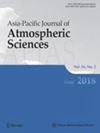For climate risk assessments accurate gridded data sets are needed. An important aspect of such data sets is that they reliably represent the spatial and temporal characteristics of extreme events. This is particularly important for precipitation extreme events which are still not well represented in climate models. Here, we compare South Korean station data with two observation-based gridded data sets (APHRODITE and ERA5-Land) and data from global high-resolution Community Earth System Model (CESM) simulations with an atmospheric resolution of about 25km. We find that the two observation-based data sets have a lower level of the 99th percentile than the station data, but that CESM reproduces extreme events better. Our study provides evidence for an overall historical decrease in very large extreme events in the station data, which is not the case in the two gridded data sets. However, changes in extremes are locally dependent as shown by local quantile regression analysis; where local historical increases in precipitation extremes are statistically significant. The spatial dependence of extreme precipitation events is not well reproduced by the two gridded data sets but well by CESM. The temporal clustering of precipitation extremes is well reproduced by all data sets. Compared to the present day simulation, the CESM simulation of a warmer climate state shows an overall increase in mean precipitation and precipitation extremes and regionally dependent changes in temporal clustering. The model results also provide evidence for a change in spatial dependence in a warmer climate with spatially larger extreme precipitation systems possible. Our results highlight the need to produce better observation-based gridded data sets and also the need to adapt to more intense and frequent extreme precipitation events in the future in South Korea.



